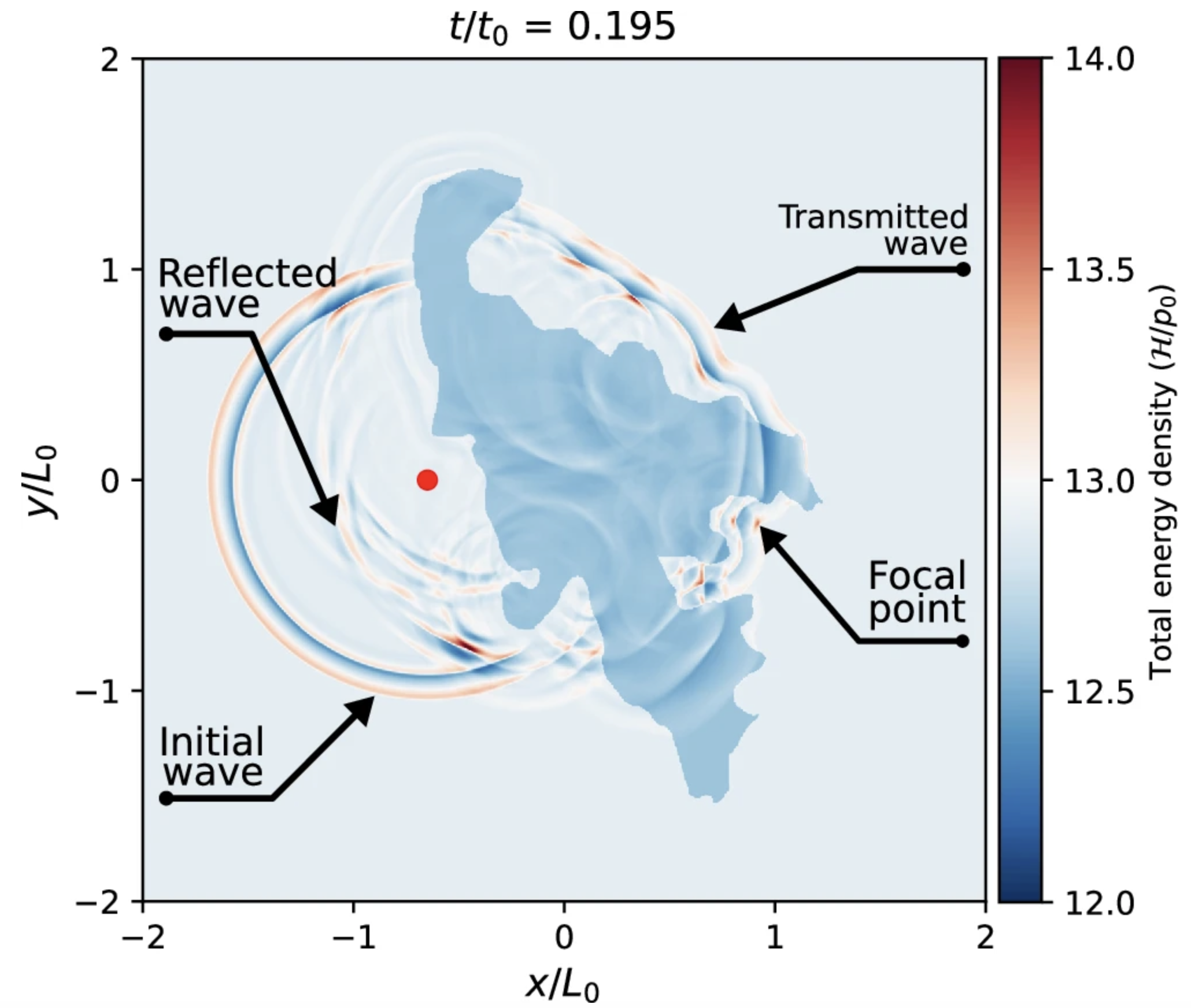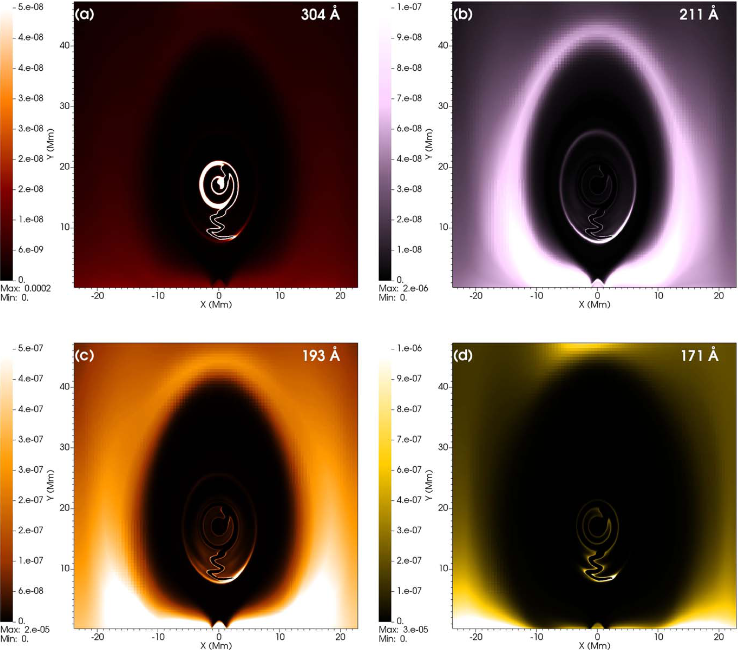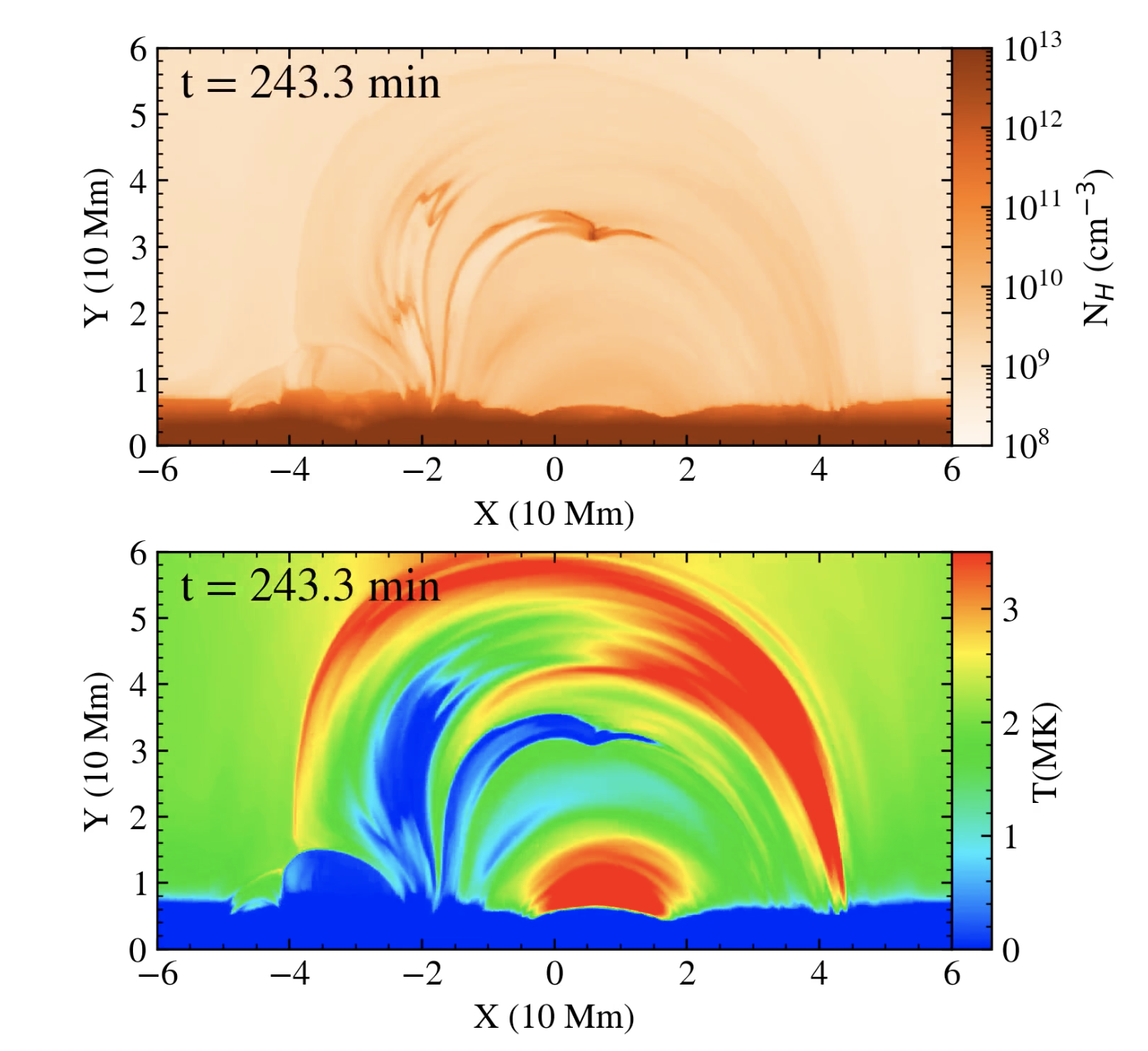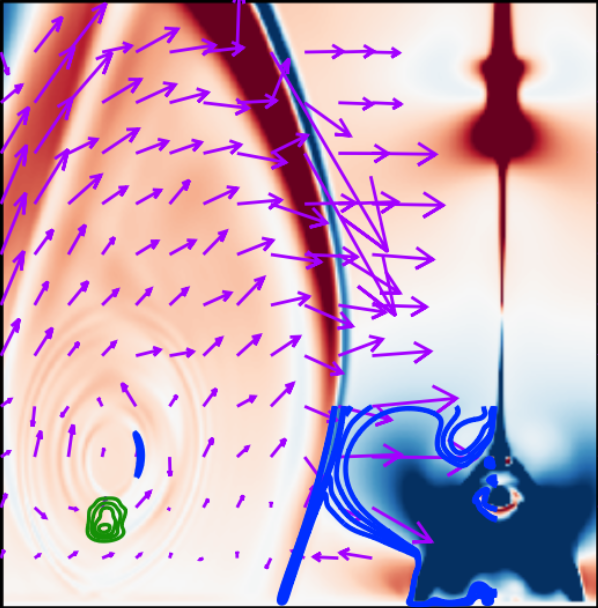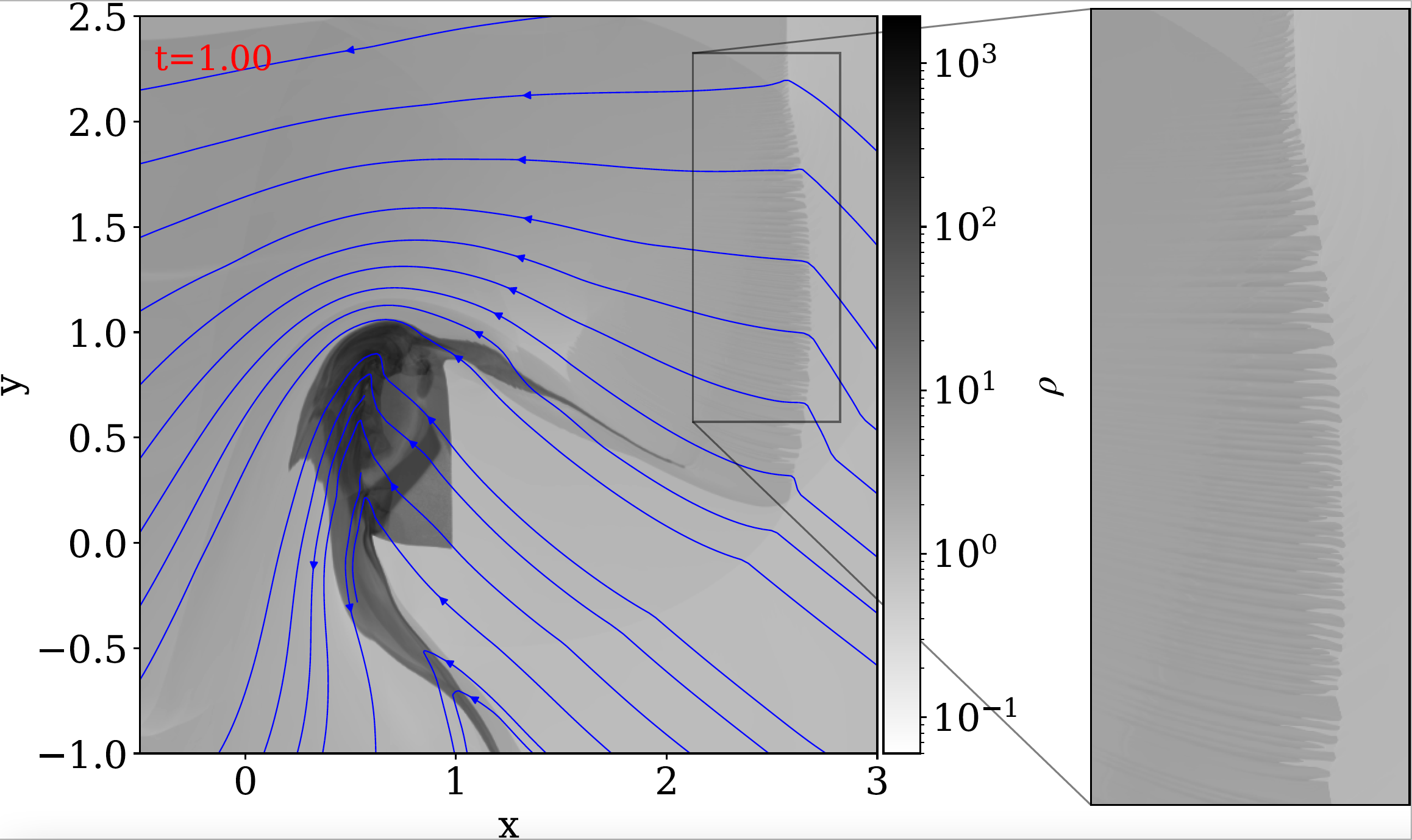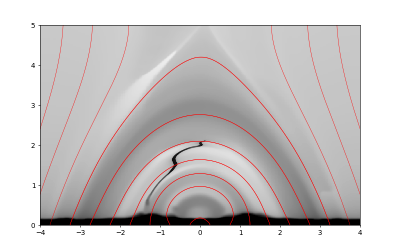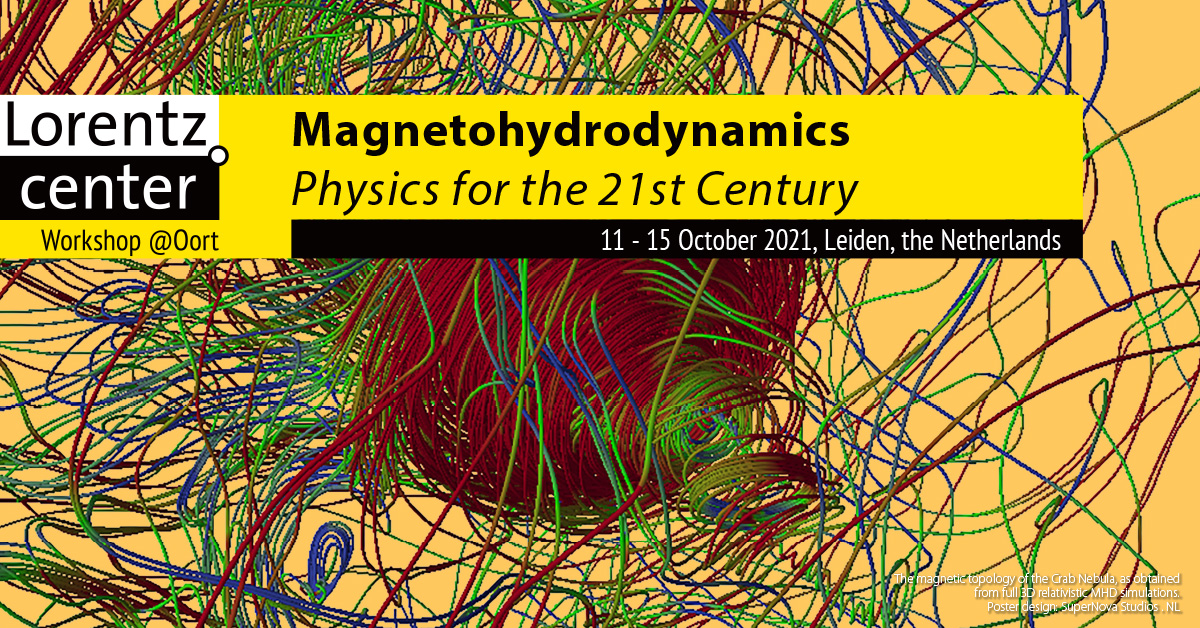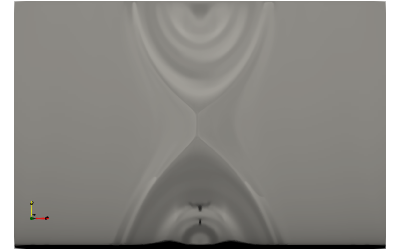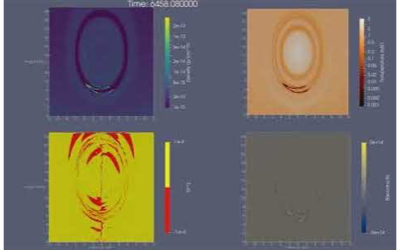Future vision
We envision realistic, 3D models of prominences, simulated far into the turbulent regime and plan to make direct contact with modern turbulence studies. We are working on coronal rain simulations at extreme resolutions, and are investigating the intricacies of linear waves in plasmas and how these connect to prominence dynamics.
State-of-the-art tools
Our grid-adaptive, massively parallel software MPI-AMRVAC allows us to identify and predict detailed solar prominence and coronal rain aspects at extreme resolutions. These are supplemented with MHD linear eigenspectrum studies using Legolas, our new, modern linear MHD solver.
Team effort
A dedicated team effort embedded within the Centre for mathematical Plasma-Astrophysics at KU Leuven and led by prof. Rony Keppens sets forth to guide, interpret and confront solar prominence activity.
Unraveling prominence secrets
How, where and why does the million degree solar corona spontaneously form these gigantic structures? What causes finestructure throughout the prominence body? How do they relate to coronal rain? What is the role of solar tornadoes often found at their feet?
Latest updates on the PROMINENT front
MHD Wave lensing observed in the solar corona
Nature Communication publication!
The Coronal Cooling Conference: rain, prominences and eruptions
Registration is open!
Rotational Flows in Solar Coronal Flux Rope Cavities
Developing a first 2.5D numerical model to reproduce the rotational flows in the prominence cavities.
Multithermal Jet Formation Triggered by Flux Emergence
Combining observation and simulations, we investigate the influence of flux emergence at one footpoint of an arcade on coronal rain as well as induced eruptions.
Prominence oscillations triggered by external perturbations
Studying the induced prominence oscillation by the nearby eruption and energetic coronal wave from the distant source.
MPI-AMRVAC 3.0: Updates to an open-source simulation framework
MPI-AMRVAC 3.0 released!
Prominence heating models
Testing a multitude of scaled heating laws for the solar corona on the prevalence of prominence condensations within flux rope topologies
Solar filaments and a milky cup of coffee: how to mix plasma in the solar atmosphere?
Solving a century-old question in Solar Physics
3D Prominence formation
Rendering the successful simulation of a fully 3D solar filament/prominence, down to scales of ~20 km, using MPI-AMRVAC.
Coronal rain in randomly heated arcades
Using MPI-AMRVAC, we performed a 2.5D MHD simulation to investigate the formation and evolution of the coronal rain phenomenon.
When hot meets cold: post-flare coronal rain
We performed a 2.5D flare simulation from pre-flare phase all the way into the gradual phase to study the formation of coronal rain in post-fflare loop.
MHD workshop in Leiden
MHD workshop at Leiden Lorentz Center.
MHD spectroscopy of a solar atmosphere
Novel results from applying Legolas to a self-consistent solar atmosphere model.
Postflare loop condensation without background heating.
We show that condensation can happen inside post-flare loop without background heating with a test.
Postdoc position (2+1 yrs)
Postdoc in numerical solar physics research.
2.5D Prominence formation
MPI-AMRVAC is successfully deployed to study the formation and evolution of a prominence in a 2.5D translationally-invariant setup.
Launching Legolas
Read up on the launch of the new Legolas code, a novel tool for MHD spectroscopy.

